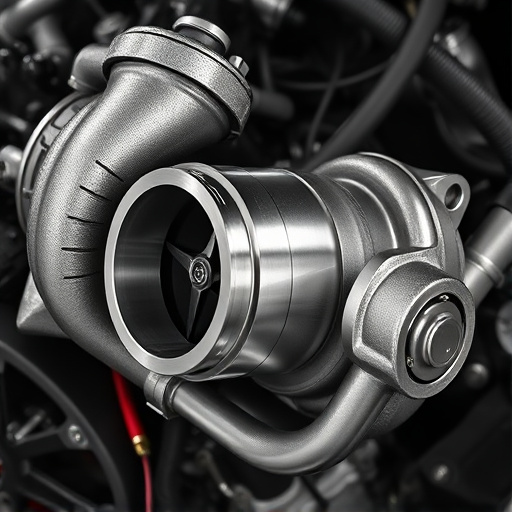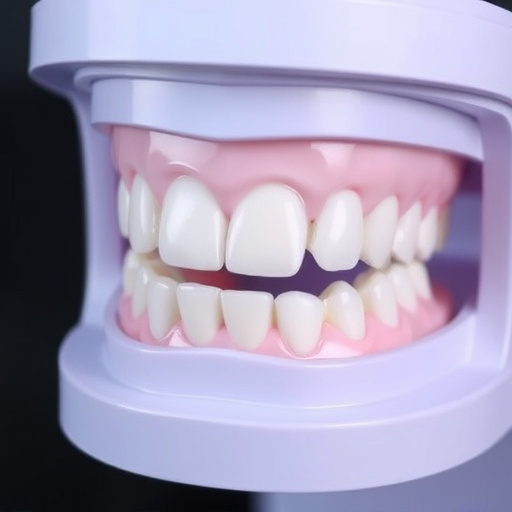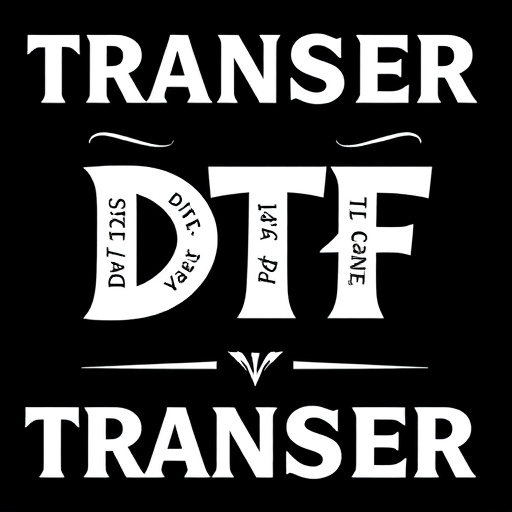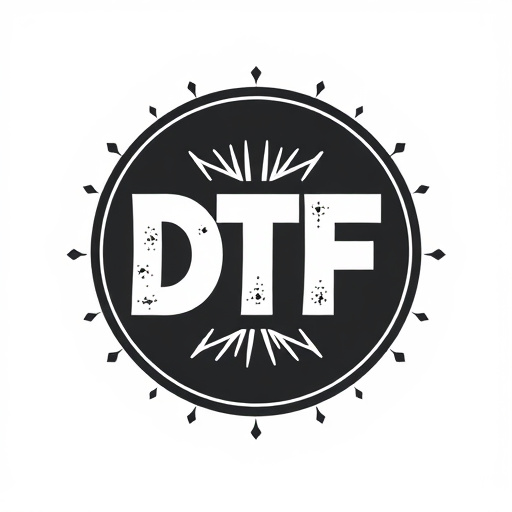Direct to Film (DTF) transfer printing revolutionizes converting detailed illustrations and designs into high-quality prints. This process starts with digital scans, enhancement, and preparation of artwork for accurate representation on light-sensitive film. Using specialized equipment, negatives are created and exposed to produce positive prints on various media. DTF offers unparalleled precision, making it popular among artists and designers. High-resolution papers and top-quality inks ensure vibrant colors and intricate details in final prints. DTF's versatility is seen in art, fashion, interior design, and promotional merchandise. Future advancements aim to improve quality, speed, resolution, and introduce interactive elements for dynamic artworks.
Discover the captivating world of Digital Thermal Transfer (DTF) technology, transforming detailed illustrations and designs into captivating film transfers. This comprehensive guide explores the intricacies of DTF, from understanding the process to selecting optimal materials and capturing complex details. We delve into its diverse applications in art, fashion, and beyond, while also peering into future trends shaping this innovative DTF technology. Uncover how DTF prints are revolutionizing creative expressions.
- Understanding DTF Transfer: A Comprehensive Guide
- The Process: From Illustration to Film
- Choosing the Right Materials for Optimal Results
- Techniques for Capturing Complex Details and Colors
- Applications: DTF Prints in Art, Fashion, and Beyond
- Future Trends: Innovations in DTF Technology
Understanding DTF Transfer: A Comprehensive Guide

The Direct to Film (DTF) transfer process is a groundbreaking technique that revolutionizes the way we convert detailed illustrations and designs into tangible film transfers. Unlike traditional printing methods, DTF involves a direct imprinting process where ink is applied to a light-sensitive film, creating a negative that can then be used for printing. This innovative approach ensures a flawless reproduction of intricate patterns, making it a favorite among artists and designers looking to create high-quality, unique prints.
DTF offers unparalleled precision, allowing for the capture of every subtle detail from the original artwork. The process begins with preparing the design or illustration, often in vector format, which is then optimized for DTF printing. Specialized software ensures that all elements are properly scaled and positioned. Once ready, the design is exposed to light through a film mask, creating a negative that accurately represents the original art. This negative is then used to create positive prints on various media, such as paper or fabric, offering artists a versatile and captivating way to bring their creative visions to life as stunning DTF prints.
The Process: From Illustration to Film
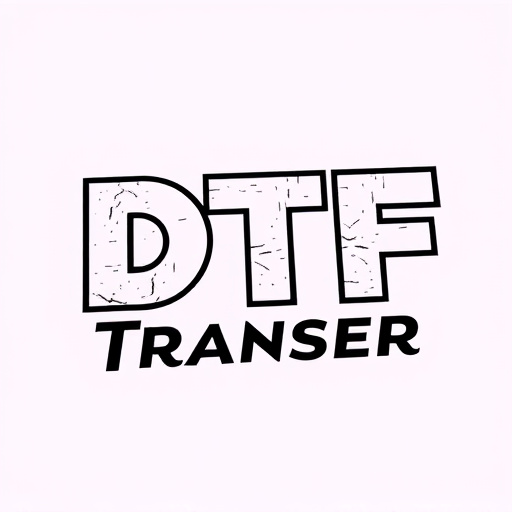
The process of transforming detailed illustrations and designs into film transfers, often referred to as DTF (Direct to Film) transfer or printing, is both an art and a precise science. It begins with high-quality digital scans of the original artwork, which are then meticulously enhanced and prepared for printing. This initial stage involves cleaning up any imperfections, ensuring smooth lines, and achieving the desired color palette. The digital file becomes the master from which numerous prints can be made.
Once ready, the DTF transfer process takes over. The digital image is etched onto a special film, creating a negative that accurately represents the original illustration. This film is then used to expose light-sensitive emulsion on a substrate, typically metal or plastic sheets. After exposure, the unexposed areas of the emulsion remain intact, forming a positive image when developed. Finally, these prints are dried and cured, resulting in vibrant, precise DTF prints that capture every intricate detail from the original design.
Choosing the Right Materials for Optimal Results

When transforming detailed illustrations and designs into film transfers via DTF (Direct to Film) methods, selecting the right materials is paramount for achieving optimal results. The choice of media plays a significant role in determining the final quality of DTF prints. High-resolution, archival-quality papers are ideal for preserving intricate details and vibrant colors. These specialized papers ensure that every stroke, line, and shade is accurately represented in the transfer process, resulting in sharp and precise images.
Additionally, understanding the compatibility of your chosen DTF printing materials with the specific film transfer technique is crucial. Factors like paper thickness, texture, and surface treatment can influence the adherence and clarity of the image. Opting for materials recommended by manufacturers or professionals in the field ensures that the transfer process is seamless, minimizing potential issues like ink smudging, bubbling, or uneven application.
Techniques for Capturing Complex Details and Colors

Capturing intricate details and vibrant colors in a DTF (Direct to Film) transfer is an art in itself. This technique involves creating high-quality prints by directly exposing film to an image, allowing for exceptional precision in reproduction. To achieve remarkable results, specialists employ advanced scanning technologies that can zoom into the finest lines and capture subtle color nuances. High-resolution scanners with adjustable settings enable precise control over the exposure process, ensuring every detail is accurately transferred onto the film.
For DTF printing, the use of specialized inkjet printers further enhances color accuracy and gradation. These printers are calibrated to produce a wide range of colors, from rich blacks to vibrant hues, creating visually stunning prints. By optimizing the printer settings and using top-quality inks, artists can achieve remarkable color consistency across various media types. This meticulous process ensures that the final DTF prints capture the original artwork’s essence, making them highly sought after by collectors and enthusiasts alike.
Applications: DTF Prints in Art, Fashion, and Beyond
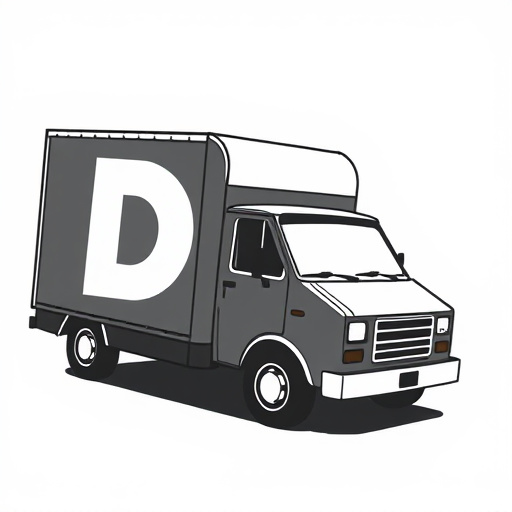
Detailed illustrations and designs transformed into film transfers, known as DTF (Direct to Film) prints, have found innovative applications across diverse fields. In the realm of art, DTF transfers bring intricate visual stories to life on canvas, enabling artists to capture fine details and vivid colors that were previously challenging to achieve. These prints also serve as unique artistic mediums, allowing for creative manipulation and layering effects that enrich the overall aesthetic.
Beyond art, DTF printing has made significant inroads into fashion design. Fashion designers are leveraging this technology to create distinctive garments with custom patterns and textures, setting their collections apart. Additionally, the film transfer process offers a sustainable advantage by reducing waste compared to traditional printing methods, making it an attractive option for environmentally conscious brands. DTF prints also find utility in various other industries, from interior design to promotional merchandise, where their versatility and high-quality results are highly prized.
Future Trends: Innovations in DTF Technology

As technology continues to advance, the future of DTF (Direct-to-Film) transfers looks promising with innovations that promise enhanced quality and efficiency. Researchers and developers are exploring new techniques to improve the precision and speed of DTF printing, enabling more intricate and detailed designs to be captured accurately on various substrates. One such trend involves the integration of advanced imaging systems, allowing for higher resolution and a wider color gamut, resulting in vibrant, lifelike DTF prints that rival traditional artistic media.
Additionally, the introduction of smart materials and adaptive inks is opening up new possibilities. These materials can respond to external stimuli, like heat or light, leading to unique effects and post-print modifications. This could lead to dynamic DTF artworks that change over time, adding an interactive element to both creation and display. With these innovations, DTF technology is poised to become a versatile and accessible method for bringing illustrations and designs to life in exciting new ways.




